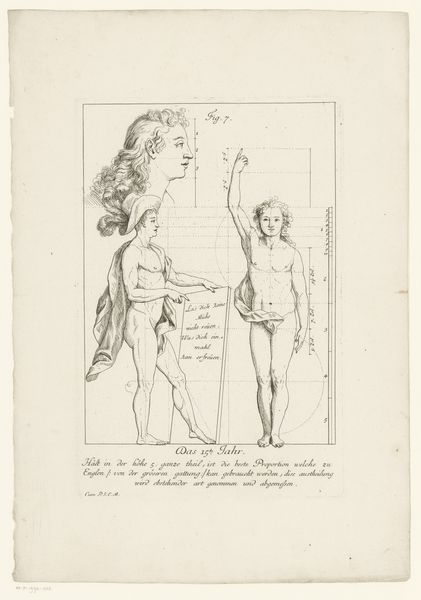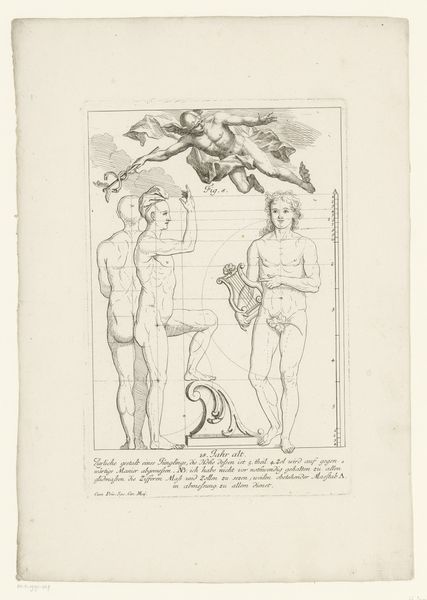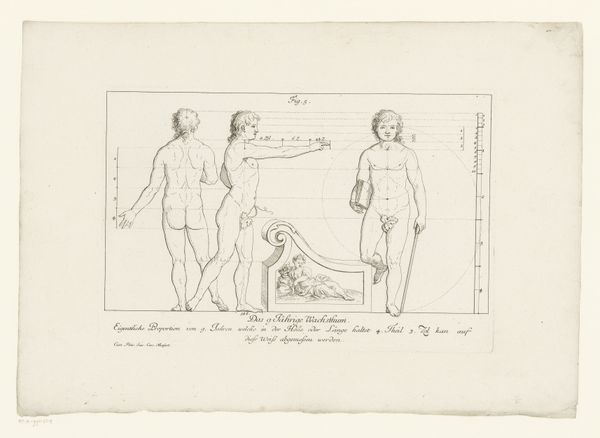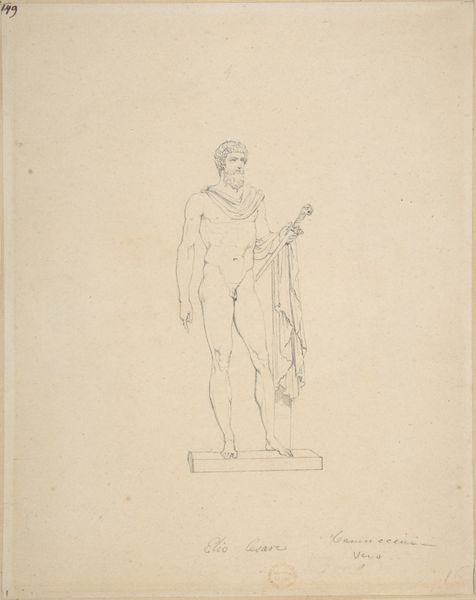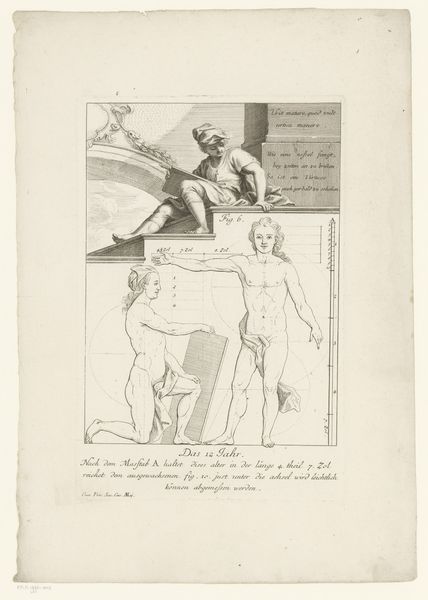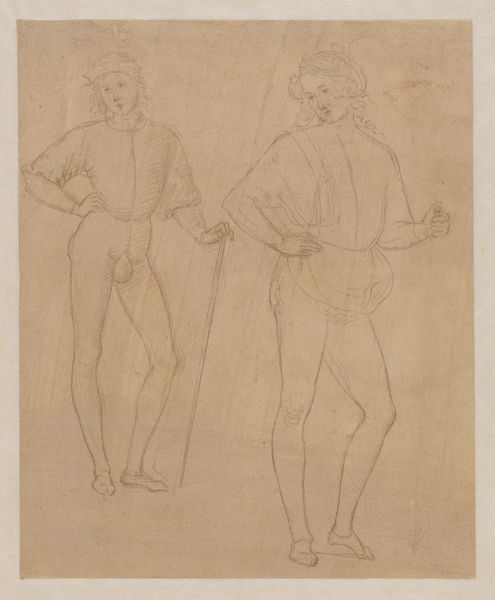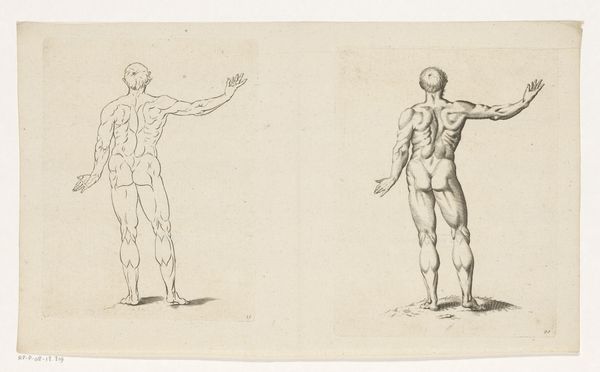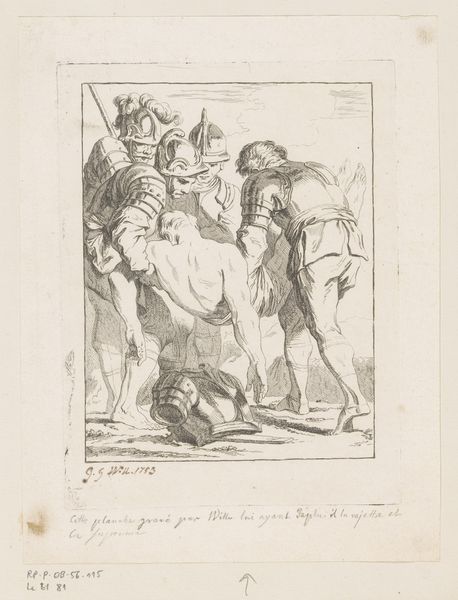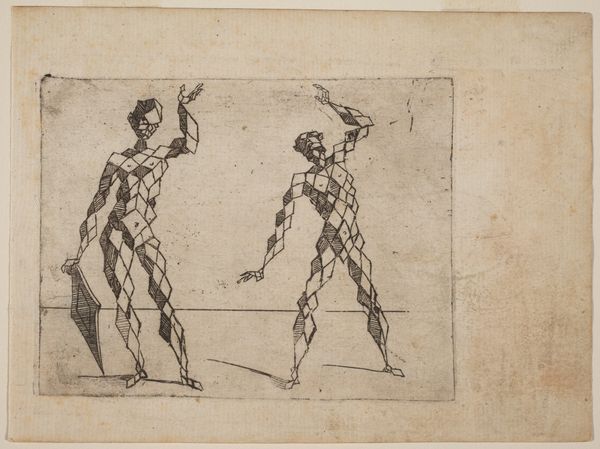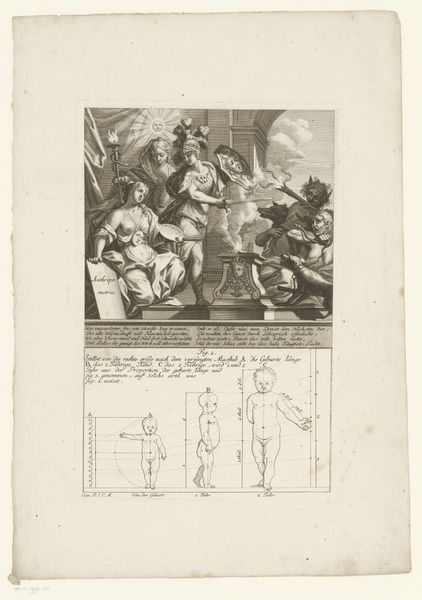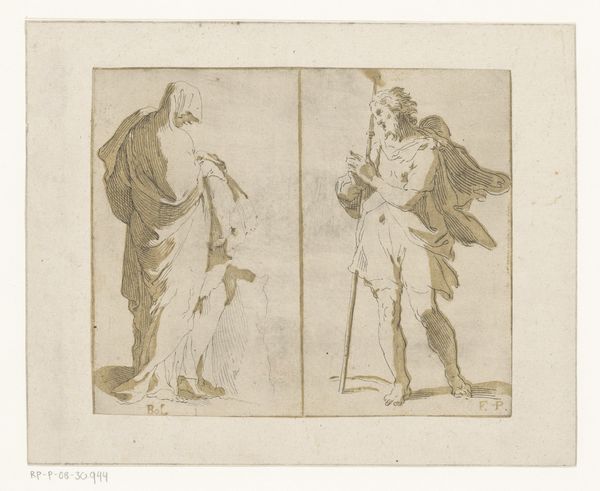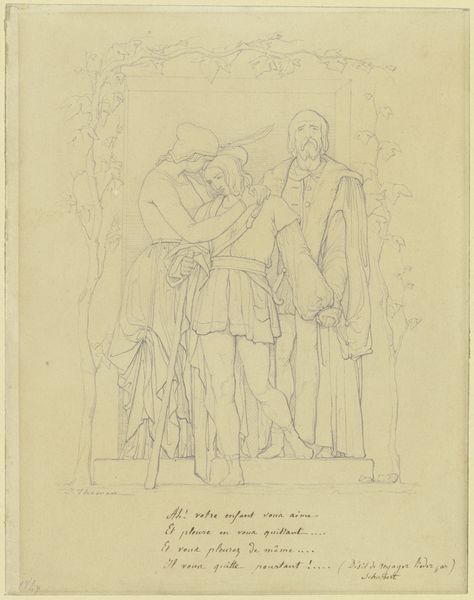
Dimensions: height 315 mm, width 209 mm
Copyright: Rijks Museum: Open Domain
Curator: I'm immediately drawn to the starkness of this drawing; it's like a page torn from some secret textbook on beauty. It has this very serene, almost mathematical air about it. What's the story behind it? Editor: Well, we're looking at "Twee aanzichten van een 21-jarig vrouwelijk lichaam," or "Two Views of a 21-Year-Old Female Body," an engraving made in 1723 by Hieronymus Sperling, now residing here at the Rijksmuseum. Curator: Sperling… sounds like a name straight out of a fairy tale. I mean, "Sparrow," if you translate it, carrying secrets, you know? A little winged thing. I am also interested by this objective tone. The title treats a human as something of a specimen. Editor: Exactly. What’s fascinating to me is the use of what looks like architectural or engineering drafting techniques. You see those grid lines and proportions laid bare. This work embodies the Neoclassical interest in ideal forms, rooted in both observation and abstract theory. Think about the context—the rise of museums, of academic art training. The female nude, rendered 'scientifically,' becomes a vehicle for exploring concepts of beauty and proportion, shaped by institutions of art and learning. Curator: It's an image preoccupied with the rational but it portrays the body. See, I always feel like when people think about making art 'rational', emotion always bleeds through—like watercolour on newsprint, do you know what I mean? You can’t escape what it means to be human when depicting people, even if they are shown almost like tools for the mind. There's vulnerability peeking from behind those clean lines. Editor: And a very specific sort of vulnerability too—the gaze here feels deliberately dispassionate, removed. Curator: Still, I wonder about the subject…did she ever see this cold objectification, or this attempt at idealization? Did she see how the math renders her both present and absent simultaneously? Did Sperling's “science” capture anything of her being? Editor: It’s impossible to know, of course, but I appreciate you pointing towards what lies beyond these clinical lines. This engraving invites reflection not just on artistic ideals but on how the social position of art has been structured by authority and who benefits when we dissect the world in this way. Curator: So, it’s both blueprint and mirror...showing how we construct what we perceive, and perceive what we construct. A very handy way to think about visual arts and their ability to shape society.
Comments
No comments
Be the first to comment and join the conversation on the ultimate creative platform.
